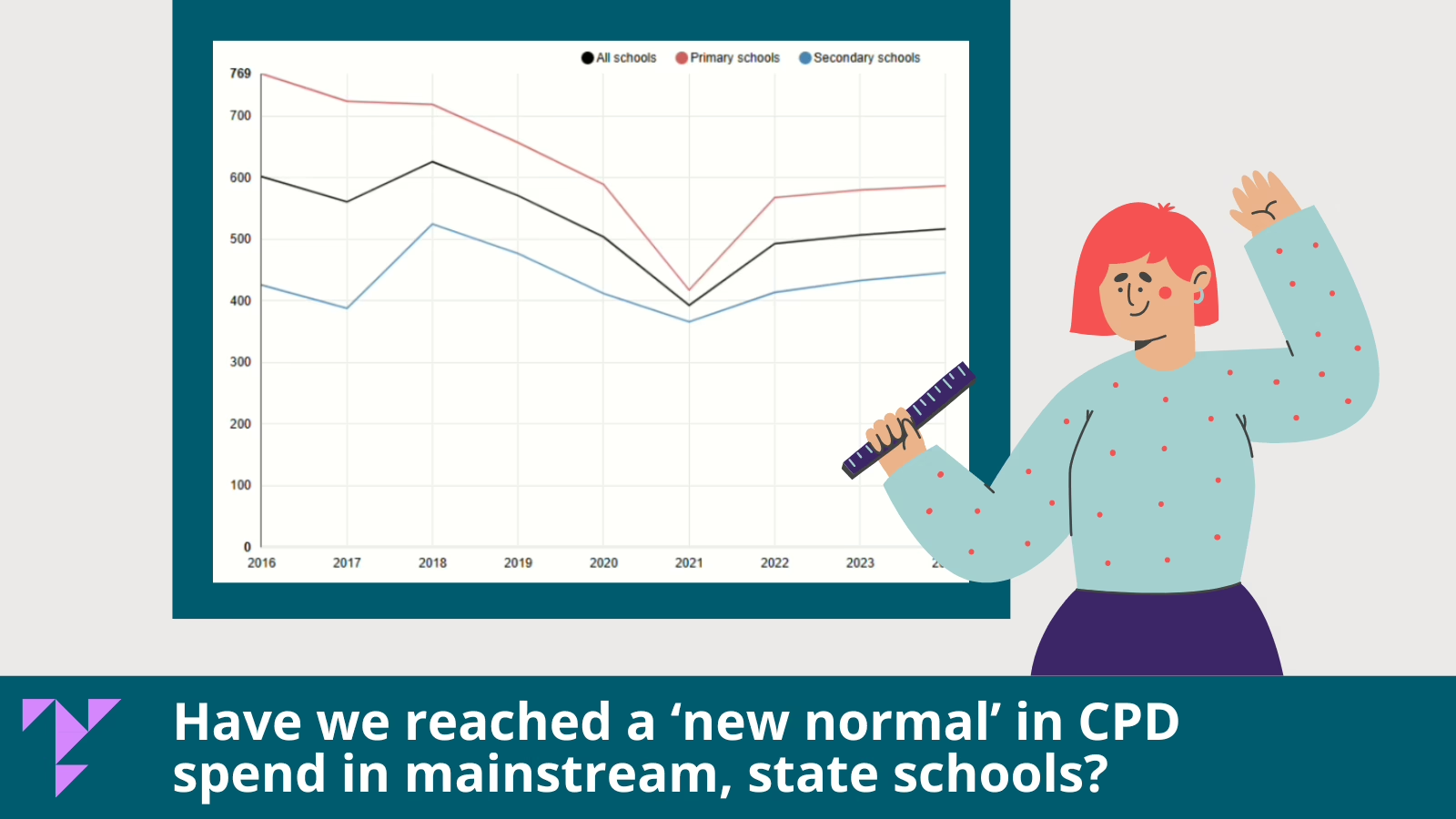The latest CPD data published by SchoolDash reinforces what is now a clear trend – that spend on CPD in mainstream state schools is stabilising at a much lower amount than a decade ago. Ahead of the publication of our landmark Teacher Development: the CPD Landscape in 2025, what do these data tell us about what is happening?
Spending on CPD has plateaued and shows no sign of recovery…
For the third year in a row, spend on CPD for teachers has stayed at around the same amount:
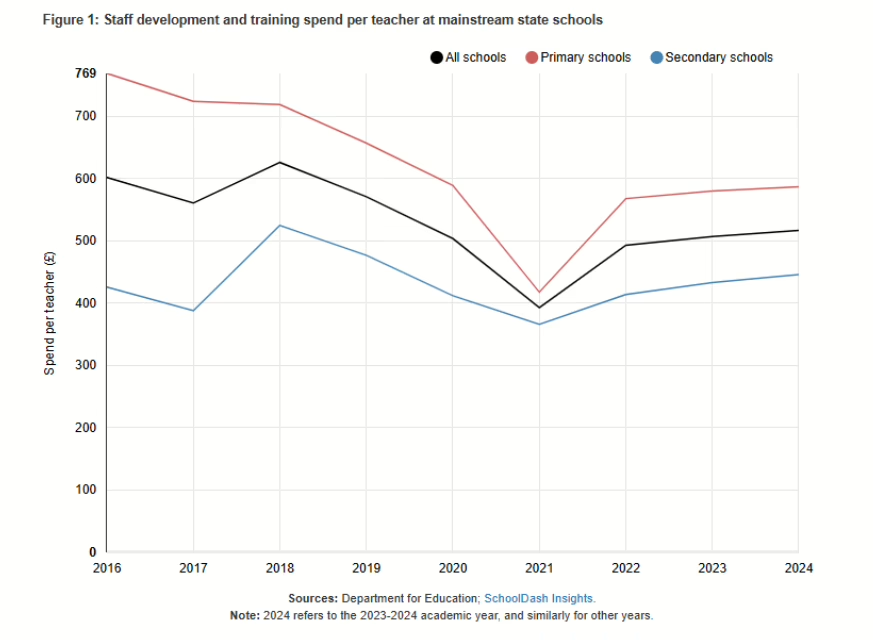
This means that we continue the reality that overall notional spending remains lower than it was in 2016, in absolute terms, across all schools. In 2015/6 the average amount spent per teacher was £602. That has now fallen to around £517 in 2023/24, which means around 85 per cent of the 2015/16 figure being spent in absolute terms.
… and the real terms drop is even more significant.
Without any significant movement in terms of absolute spend since last year (when the overall figure was £506 per teacher), this means we are still looking at a real terms drop of around 50 per cent in primary schools and around 30 per cent in secondary schools, once inflation is taken into account.
This drop undoubtedly reflects the financial challenges that schools in England continue to contend with and which show no signs of abating in the near future, as the Chancellor and the Secretary of State for Education balance the economic realities facing the country with the need to invest more in crucial areas of social policy, including schools.
Differences across the system
Regional variations are significant but inconsistent. London spends the least per teacher at primary but the most at secondary for example, whereas almost the reverse is found in the West Midlands. Overall, the East Midlands and Yorkshire and Humber see the lowest overall spend.
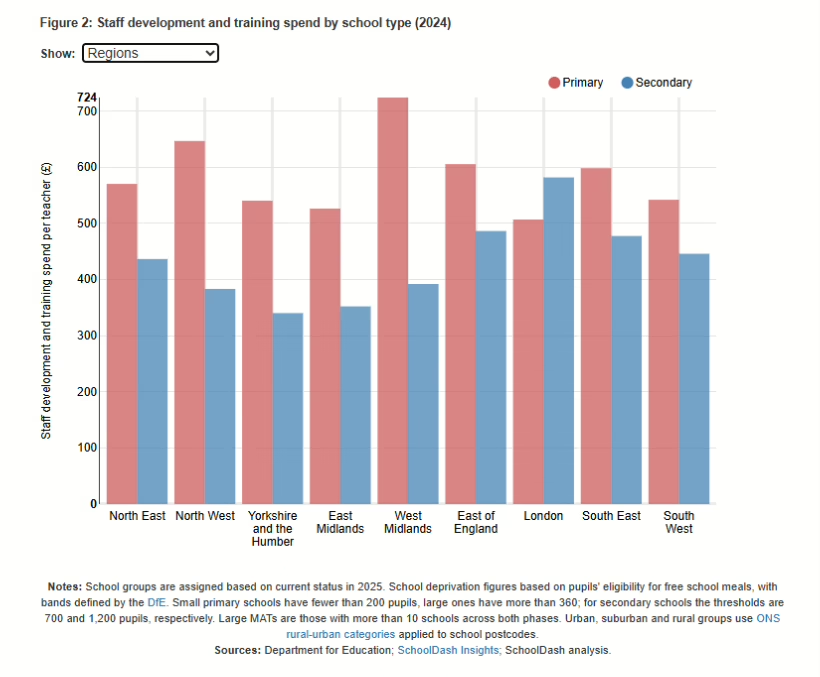
We also see a mixed picture in terms of rurality with schools in rural areas spending the most per teacher in primary schools, but the least in secondary schools:
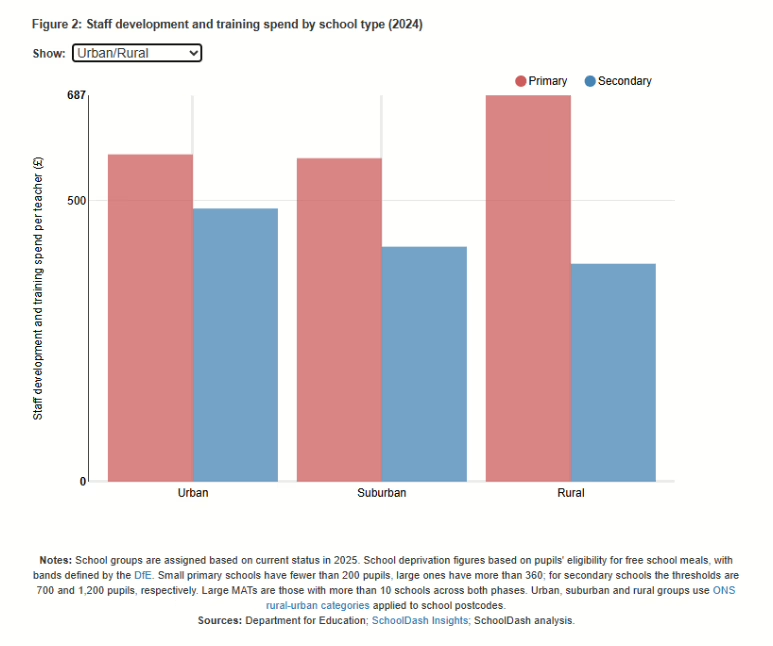
And there some variation in spend based on level of deprivation, with schools with higher proportions of disadvantaged pupils spending more than those in the medium or low range:
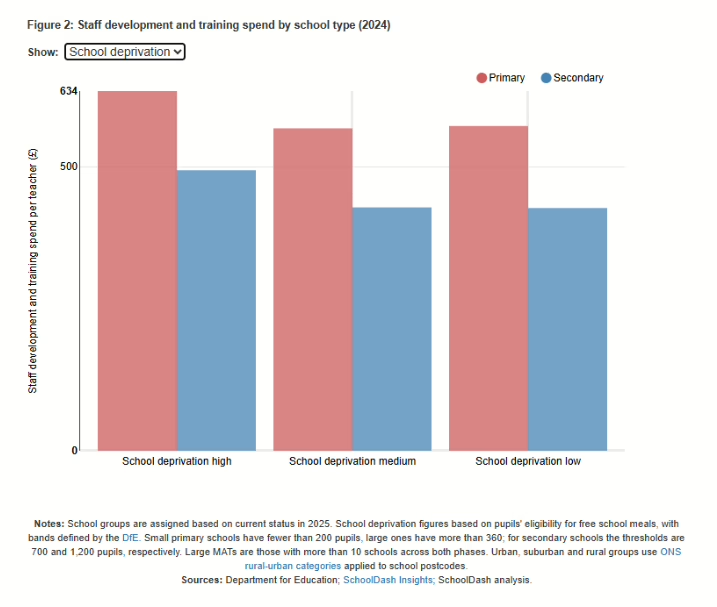
Overall, it is unclear whether these variations are significant enough to impact on outcomes in these schools, in particular, whether they respond to the local needs of pupils based on these different school characteristics.
What does this mean?
It is notable that 23/24 represents the last year in which the DfE fully funded the delivery of NPQs across the English state school system, so it is possible that this continued investment (which in fact reached a peak at this point) has provided schools with a way to engage in professional development without spending their core budget.
However, from September 2024, the amount of funding available for NPQs was dramatically slashed and free NPQs were available in limited circumstances. If, as we have speculated previously, the drop in school investment in CPD has been driven by the DfE’s investment in NPQs, then we might hope to see a significant recovery in spend when the 24-25 figures are available. The worry, of course, is that funding pressures do not allow schools to fill the gap that NPQs have occupied: something to pay careful attention to.
Overall spend is, of course, an imperfect proxy for impact and it is not necessarily the case that lower spend means worse outcomes. What matters most is whether the CPD chosen is appropriate and has the desired outcome. This relies on schools being able to make effective choices, teachers being able to apply new learning in the classroom, and interventions being properly evaluated. Further work is needed to investigate these questions in more detail.
What is the CPD Leadership Hub?
If you lead CPD across a school, trust, or team, our free CPD Leadership Hub is a space for you. By creating a free account, you gain access to valuable resources to help you evaluate, implement, and plan effective professional development
